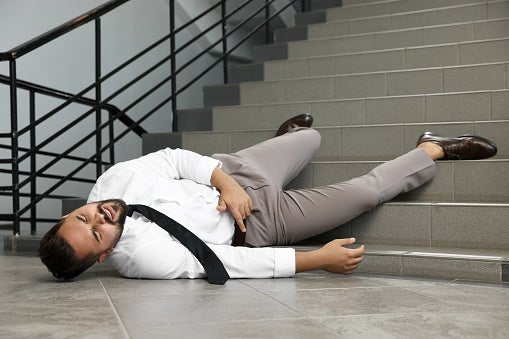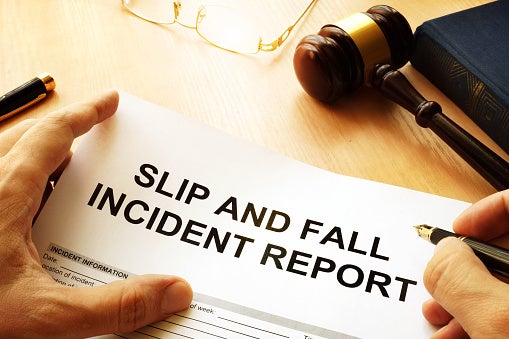Wrongful Death from Slip-and-Fall Incidents: Proving Negligence in California
Slip-and-fall accidents can be devastating, especially when they result in the tragic loss of a loved one. These incidents often occur in places like grocery stores, office buildings, or private residences due to hazardous conditions. When negligence is a factor, families may have the right to pursue a wrongful death claim to seek justice and compensation.
If you’ve found yourself grappling with the aftermath of such a tragedy, seeking to understand wrongful death claims and the legal steps involved in proving negligence in California is the best place to start.
Understanding Wrongful Death and Slip-and-Fall Incidents

What Is Wrongful Death?
Wrongful death occurs when a person loses their life as a result of someone else’s negligence, recklessness, or intentional act. Under California law, family members or representatives of the deceased can file a lawsuit to seek compensation for both economic and emotional losses.
Types of Slip-and-Fall Incidents
Slip-and-fall incidents can result from a variety of hazardous conditions, such as:
- Wet or slippery floors without warning signs.
- Poorly maintained staircases or handrails.
- Uneven surfaces or loose carpeting.
- Insufficient lighting in walkways.
These avoidable dangers can cause fatal injuries, such as traumatic brain injuries, spinal cord damage, or internal bleeding, when property owners fail to address them promptly.
Challenges in Proving Negligence in Slip-and-Fall Wrongful Death Cases
Proving negligence in wrongful death cases is a complex process that requires gathering strong evidence and satisfying legal standards. To succeed, you must demonstrate that the following four elements existed:
- Duty of Care: Property owners have a legal obligation to keep their premises reasonably safe for visitors. This duty includes repairing hazards, maintaining cleanliness, and providing warnings for any known dangers.
- Breach of Duty: You must show that the property owner failed to fulfill their duty. This may involve proving they neglected to repair a hazard or failed to inform visitors of potential risks.
- Causation: Establishing causation can be challenging. You’ll need to demonstrate that the property owner’s negligence directly caused the slip-and-fall accident, which led to the victim’s death. Defense teams often argue that external factors contributed to the incident.
- Damages: The final element requires showing that the incident caused quantifiable damages. These can include emotional distress, medical expenses, and loss of financial support, among others.
The help of an experienced wrongful death attorney can make a substantial difference in navigating these challenges effectively.
What Compensation Can Families Expect?
While no settlement can replace the loss of a loved one, pursuing compensation can alleviate some financial burdens and bring accountability to the responsible party.

Common Types of Compensation in Wrongful Death Claims:
Economic Damages
These damages are meant to cover the financial losses directly associated with the death. They typically include costs such as funeral and burial expenses, outstanding medical bills incurred before the person passed away, and the loss of income or financial support that the deceased would have provided to their family. For example, if the deceased was the primary breadwinner, this compensation helps the surviving family maintain financial stability.
Non-Economic Damages
Non-economic damages address the emotional and intangible losses experienced by surviving family members. This includes compensation for the loss of companionship, affection, guidance, and emotional support that the deceased provided. Additionally, it may cover the mental anguish and emotional suffering endured by the loved ones, recognizing the profound impact such a loss can have on their well-being and quality of life.
Punitive Damages
Punitive damages are not always awarded but may be granted in cases where the actions of the responsible party are found to be especially reckless, grossly negligent, or malicious. These damages are intended to punish wrongful conduct and deter similar behavior in the future. For instance, if a property owner’s willful neglect directly led to the death, the court may award punitive damages as a warning to others.
Each wrongful death case is unique, with compensation determined by the specific circumstances surrounding the incident. Factors like the deceased’s age, earning potential, and the nature of the relationship with the survivors may influence the final award. Families are encouraged to work closely with legal professionals to obtain the compensation they deserve.
Contact Us for a Consultation
Taking legal action after a loved one’s death is a necessary step toward securing accountability and financial relief for your family. When negligence causes such a grievous loss, you deserve compassionate, experienced support to make sense of your legal options.
If you’re dealing with the wrongful death of a loved one due to a slip-and-fall accident, you don’t need to face this legal battle alone. At Bakerink, McCusker & Belden Law, our team has served the Tracy, CA community for over 35 years, offering compassionate and professional legal representation.
Contact us today for a free consultation at Bakerink, McCusker & Belden Law or call (209-835-9592). Our trusted wrongful death law firm will help you seek justice for your loved one.
RECENT POSTS
categories
- Uncategorized
- Personal Injury
- Estate Planning
- customer reviews
- Financial Planning
- Work Injury
- Tracy Lawyer
- Attorney
- Dog Bites
- Auto Accident
- Slip and Fall
- Car Accident
- Living Trusts
- Trust Administration
- Living Will
- Wrongful Death
- Probate
- advanced health care directive
- About Us
- Russian linguist
- Infographic
- Wills and Trusts
- Will
- Car Crash
- Executor
- Whiplash Injuries
- Estate Taxes
- Slip and Fall Injury
- Auto Accident Claims
- Intestate Succession
- Disinheritance
- Trust Administrators
- Cycle Accident
- Accident
